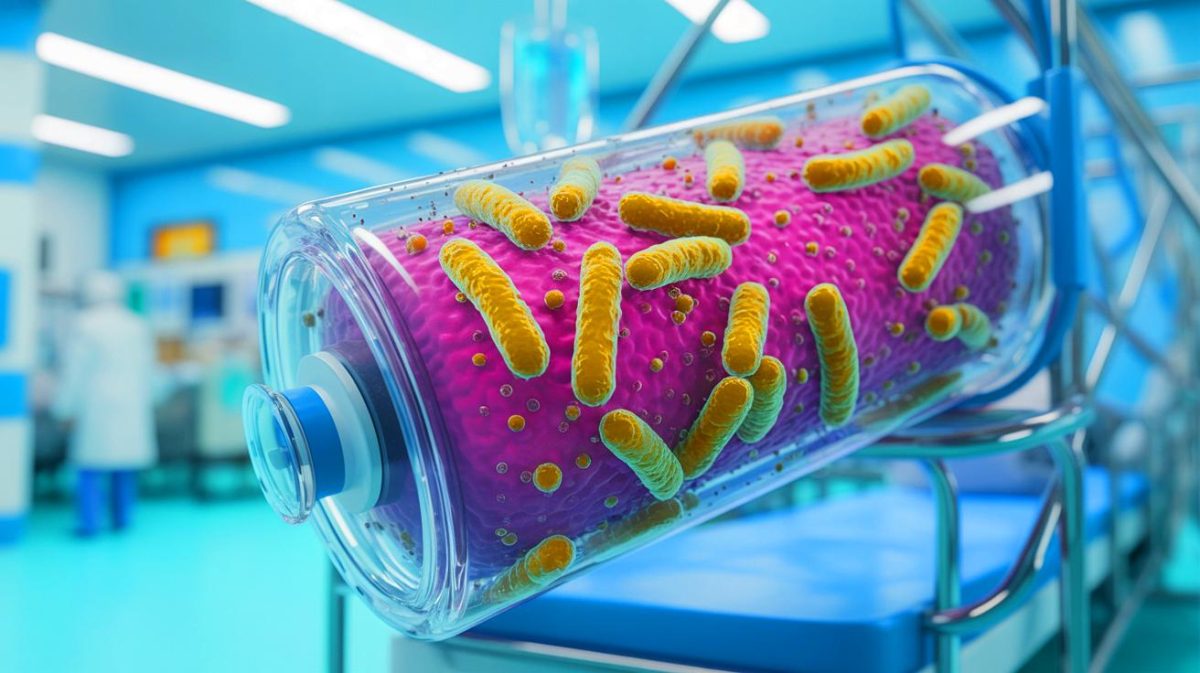| IN A NUTSHELL |
|
In an alarming revelation, recent research has unveiled a new threat lurking within the sterile walls of hospitals: certain bacteria have developed the ability to degrade plastics commonly used in medical devices. This discovery challenges long-held assumptions about the durability and safety of these materials in healthcare settings. The study, conducted by researchers at Brunel University London, specifically highlights the capabilities of Pseudomonas aeruginosa, a bacterium notorious for its role in antibiotic-resistant infections, to metabolize polycaprolactone (PCL), a plastic used in various medical applications. The implications of this finding stretch beyond material degradation, raising significant concerns about patient safety and hospital infection control.
Plastic as Pathogen Fuel
The groundbreaking study revealed that Pseudomonas aeruginosa can produce an enzyme called Pap1, which actively breaks down PCL. When tested in laboratory conditions, Pap1 successfully destroyed approximately 70% of a PCL sample within a week. This discovery is shocking not only because the bacterium can consume the plastic as its sole carbon source, but also due to the broader implications regarding bacterial resilience and biofilm formation.
Biofilms are dense, multicellular aggregates that adhere to surfaces, creating a formidable barrier against medical interventions. The degradation products of PCL seemingly enhance biofilm formation, making infections exponentially harder to treat. This poses a dire threat to patients with medical implants, as these biofilms can persist on surfaces and within devices, leading to prolonged infections and complications.
Professor Ronan McCarthy, who led the study, suggests that the ability of these bacteria to utilize plastic could be contributing to hospital outbreaks. Emphasizing the need to rethink our use of certain plastics in medical settings, McCarthy advocates for screening pathogens for these degrading enzymes to better understand and mitigate the risks involved.
Broader Implications
While the study primarily focused on the bacterium’s interaction with PCL, researchers suspect that this is just the tip of the iceberg. Their genomic analysis indicates that other pathogens may possess similar enzymes capable of attacking a variety of medical-grade plastics. This revelation poses a threat to the integrity of materials like polyethylene terephthalate and polyurethane, which are essential components of catheters, dental implants, and surgical dressings.
The ability of bacteria to degrade these materials not only explains their persistence in hospital environments but also sheds light on why some hospital outbreaks are particularly difficult to control. The ubiquity of plastic in modern medicine calls for an urgent reassessment of its use and the potential risks it poses to patient safety. As Professor McCarthy warns, understanding how these pathogens have adapted to degrade plastic is crucial for developing effective countermeasures.
The Role of Biofilms in Infection Control
The presence of bacterial biofilms significantly complicates infection management in healthcare settings. These biofilms act as a protective shield for bacteria, making them resistant to antibiotics and the body’s immune response. The formation of biofilms on medical devices can lead to chronic infections, device failure, and increased healthcare costs.
To combat this threat, hospitals must adopt more stringent infection control measures, including the regular screening of medical devices for biofilm formation. Researchers are also exploring alternative materials that are less susceptible to bacterial degradation. The development of biofilm-resistant surfaces and coatings holds promise for mitigating the risks associated with biofilm-related infections.
Understanding the mechanisms behind biofilm formation and persistence is essential for developing targeted interventions that can disrupt this process. As research in this area progresses, it will be crucial for healthcare providers to stay informed about the latest developments and incorporate new strategies into their infection control protocols.
Future Directions in Medical Plastic Use
The findings from this study underscore the urgent need for innovation in the design and use of medical plastics. Researchers are now exploring new materials that are resistant to bacterial degradation while maintaining the necessary properties for medical applications. The development of alternative polymers and composites that are less prone to microbial attack could enhance the safety and longevity of medical devices.
Additionally, advancements in surface modification technologies offer promising solutions for enhancing the resistance of existing materials to bacterial colonization. By altering the surface properties of medical devices, it may be possible to prevent biofilm formation and reduce the risk of infection.
As the medical community grapples with these challenges, collaboration between researchers, healthcare providers, and industry stakeholders will be vital for driving innovation and ensuring patient safety. The ongoing quest for more durable and antimicrobial-resistant materials represents a critical frontier in the fight against healthcare-associated infections.
The discovery of bacteria capable of degrading medical plastics raises significant concerns about the future of infection control in hospitals. As researchers continue to explore the implications of this finding, the medical community must remain vigilant and proactive in addressing the challenges posed by these resilient pathogens. How will the healthcare industry adapt to these new threats, and what innovations will emerge to safeguard patient health in an increasingly complex microbial landscape?
Did you like it? 4.4/5 (27)









Wow, this is terrifying! How are hospitals planning to tackle this new threat? 😱
Pseudomonas aeruginosa strikes again… Is there any way to stop this superbug?
Is it possible to develop a plastic that these bacteria can’t degrade? 🤔
This feels like a plot from a sci-fi movie! When did bacteria become so advanced?
Should we be worried about this happening in all hospitals? 🏥
Thank you for shedding light on this issue. We need more awareness around it.
What’s next, bacteria eating our smartphones? 😂
Are there any alternative materials available right now that are resistant to these bacteria?
So, does this mean we need to change medical device materials urgently? 🆘
Great article! It’s alarming but also fascinating to learn how adaptable bacteria can be.